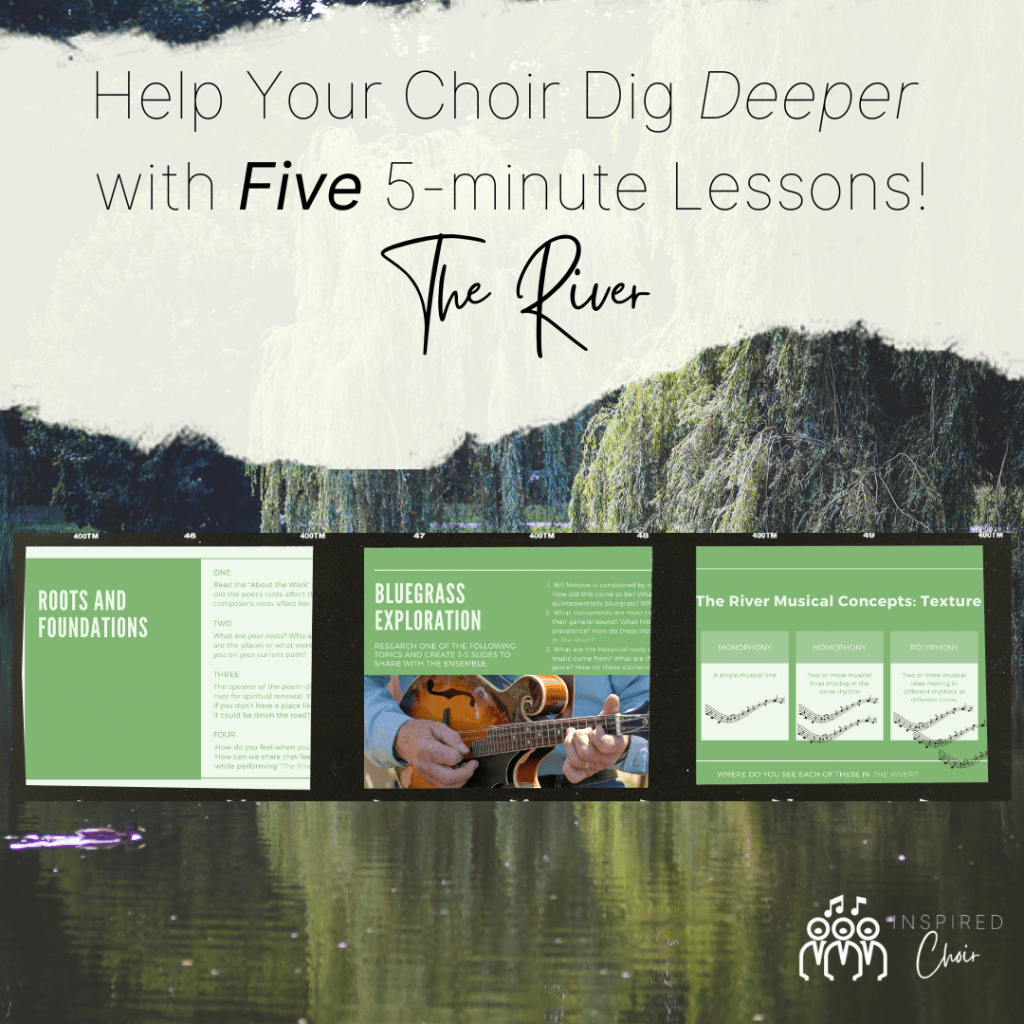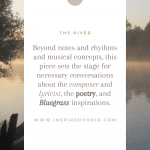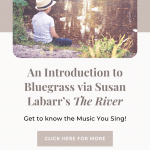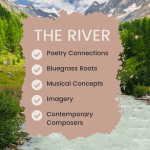An Introduction to Bluegrass via Susan Labarr’s The River
In a choral world filled with bass choir music about girls, sailing, and drinking, Susan Labarr’s The River with lyrics by Bill Cairns is a refreshing diversion from the norm. This thoughtful and reflective piece allows tenor and bass singers an opportunity to consider the places that set the foundation for their lives as they sing about a man’s connection to his boyhood river. The folksy melody, scaffolded harmonies, and potential for bluegrass instruments makes it an excellent back-to-school piece for an advanced bass ensemble. Below is an in-depth guide to The River including:
- A Discussion of Contemporary Choral Artists
- Poetry Connections and Considerations
- Bluegrass and The River
- Musical Concepts in The River
- The River Teacher Resources
- …and so much more!
Exploring Roots
This fall, my ensembles and I will be exploring the idea of “Roots” through our repertoire. We will be studying music from a variety of cultural and historical roots, as well as examining the roots that we all have that help make us, us. What a nice way to get to know our brand new singers and learn a bit more about our established singers at the beginning of the year!
Within The River, the narrator describes how their upbringing along the river laid the foundation for who they came to be. Although the river and the lessons they learned from the river are with the narrator always, sometimes they have to come back to the river to recharge and ground themselves.
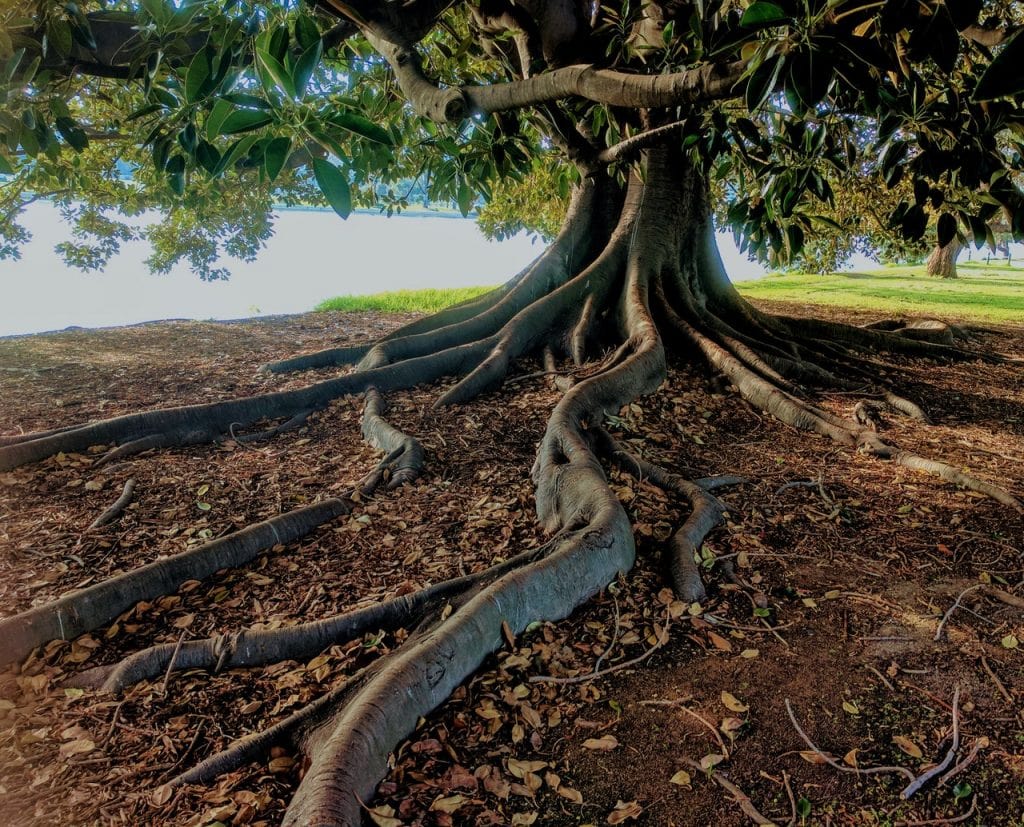
As I listen to Brandon Boyd and his ensemble from the University of Missouri perform their interpretation of The River, I am transported to the green and grassy backyards and gardens I spent so much time in as a kid. Play, creativity, and exploration are essential to who I am, and continue to ground and inspire me.
Lots to Learn with The River!
Composer Susan LaBarr has provided such a nice layering of harmonies in this piece – beginning with a unison verse, then moving to two, then three, then finally four parts (TTBB). This will be a great way to introduce my singers to their different singing formations at the start of the year, and will likely allow them to be successful on the unison and two-part sections of the piece immediately.
Beyond studying notes and rhythms and introducing us to a variety of musical concepts, this piece sets the stage for necessary conversations about the composer and lyricist, the poetry, and Bluegrass inspirations.
Contemporary Choral Artists
I love to program and study works by contemporary composers – and get even more excited when those composers use texts from current authors! Susan LaBarr is a composer and choral editor who has an impressive list of titles for a variety of choirs. Some pieces you may know include the gorgeous Grace Before Sleep and After the Storm.
LaBarr cites American choral composer icon Alice Parker as one of her mentors and compositional inspirations. I wonder: what Parker and LaBarr pieces could we pair up for a mentor/mentee set?
If you’d like to learn more about LaBarr and her work, the Alpharetta Community Chorus posted an interview with her in 2020. They discuss her composing process, how she came to be a composer, and several of her pieces that they have studied.
Poetry Connections
The lyrics of the piece were written by children’s book writer Bill Cairns. After reading his short author’s bio mentioning his volunteer work with a river rescue squad, I’d posit that this work is perhaps a bit autobiographical. He and LaBarr have collaborated on several pieces including The River and After the Storm.
Although the author sticks to a simple four-line rhyme scheme (ABCB), the lyrics feel conversational and unaffected. The composer sets the lyrics beautifully, allowing the words to fall into a speech-like rhythm. This is very much in line with the compositional style of Bluegrass music which focuses on the words and story-telling.

Bluegrass Music Essentials in The River
My first semester at my current job, I programmed a piece that required banjo. On day one with my tenor/bass ensemble, I mentioned that we would need to find a banjo player, thinking that would be a tenuous task. One of my students quickly volunteered, “you’ve got one right here!” I guess I should have realized now that I was down south, banjo players would not be so difficult to find!
Hallmarks of Bluegrass music include high energy, stringed instruments playing quick licks, and forward-sounding colloquial singing. Bill Monroe is widely recognized as the “father of Bluegrass.” He and his band brought the style, a fusion of southern, blues, country, and English/Irish/Scottish music, to the public in the early 1940s.
The River allows for flexible instrumentation, with piano and optional guitar/banjo and percussion. As is the tradition with Bluegrass, only chords and two short percussion licks are provided, allowing the instrumentalists space to improvise. I’m excited to see what kind of Bluegrass band we can put together for this piece in the fall!
Musical Concepts
Sometimes it’s a little bit easier to grasp on to traditional music theory concepts when you see them in context. Here are a few musical concepts you may come across as you study this piece:
- Monophony: A single musical line – as represented by the tenor line in the first verse.
- Homophony: Two or more musical lines move in the same rhythm. Found with the tenor and bass duet in the second verse.
- Polyphony: Two or more musical lines move in different rhythms at different times. Found in the fourth verse with all four voice parts.
- Dotted Rhythms: The dot adds half of the length of the note before it. Therefore a dotted half note receives 2 beats (half note) + 1 beat (the dot – half of a half note) = 3 beats. You’ll see dotted eighths, quarters, and half notes throughout. Although tricky to read, these help preserve the speech-like quality of the lyrics.
- 6/4 Time Signature – six quarter note beats per measure. A few times throughout the piece, we switch from a 4/4 time signature (four quarter note beats per measure) to a 6/4 time signature. The rhythms can get tricky here – I’d encourage you to write some big counts above these measures.
- Tenuto – small line above the note head – indicates to sustain the note for its full value. We see these consistently on pages 7-11, so we should hear a stylistic difference throughout these verses.

Complementary Choral Pieces
Want to listen to other pieces like The River? Or planning a concert and need some programming ideas? Here are a few complementary pieces!
Thinking about a river theme?
- I loooove Stand in that River by Moira Smiley – very similar in its folk style and laid-back pace
- Allison Kraus’s As I Went Down to the River to Pray is always a hit. And just feels good to sing!
- Maybe this one is a stretch? Harry Belafonte’s Turn the World Around (this version arranged by Roger Emerson) features some river imagery and opens up the door to Trinbagonian-Caribbean musical style
A few of the other “roots” themed pieces I’m pairing with The River this concert cycle:
- Martin Schröder’s arrangement of Randy Dandy O
- Veljo Tormis’s Tantsulaul
- Michael McGlynn’s Fionnghuala
- The full “Singing Our Roots” program round-up
I’d Love to Hear from You!
Have you sung or conducted The River with your choir? Did you encounter any challenges? Were you able to find Bluegrass musicians? What foundations did you envision as you performed the piece? Tell me about your experience with this piece in the comment section below!
The River Teacher Resources
Free Comprehension Worksheets
Choir Leaders! I have begun to include short comprehension worksheets with each Inspired Choir blog post. Each worksheet includes 5-6 knowledge-based questions about the post and concludes with a musical decisions/applications question. Use as a homework assignment, sub activity, listening challenge, or guide for conversation in class. Fill in the form below to receive a link immediately to all “Roots” Worksheets.
The River Lesson Plan Bundle
Check out the Inspired Choir Shop for the The River Lesson Plan Bundle. This bundle includes the following five minute lesson plans, all with connections to National Standards and SEL Competencies:
- Roots and foundations discussion
- Bluegrass exploration project
- Contemporary composers assignment
- Interdisciplinary words and images assignment
- Music theory vocabulary & visuals
